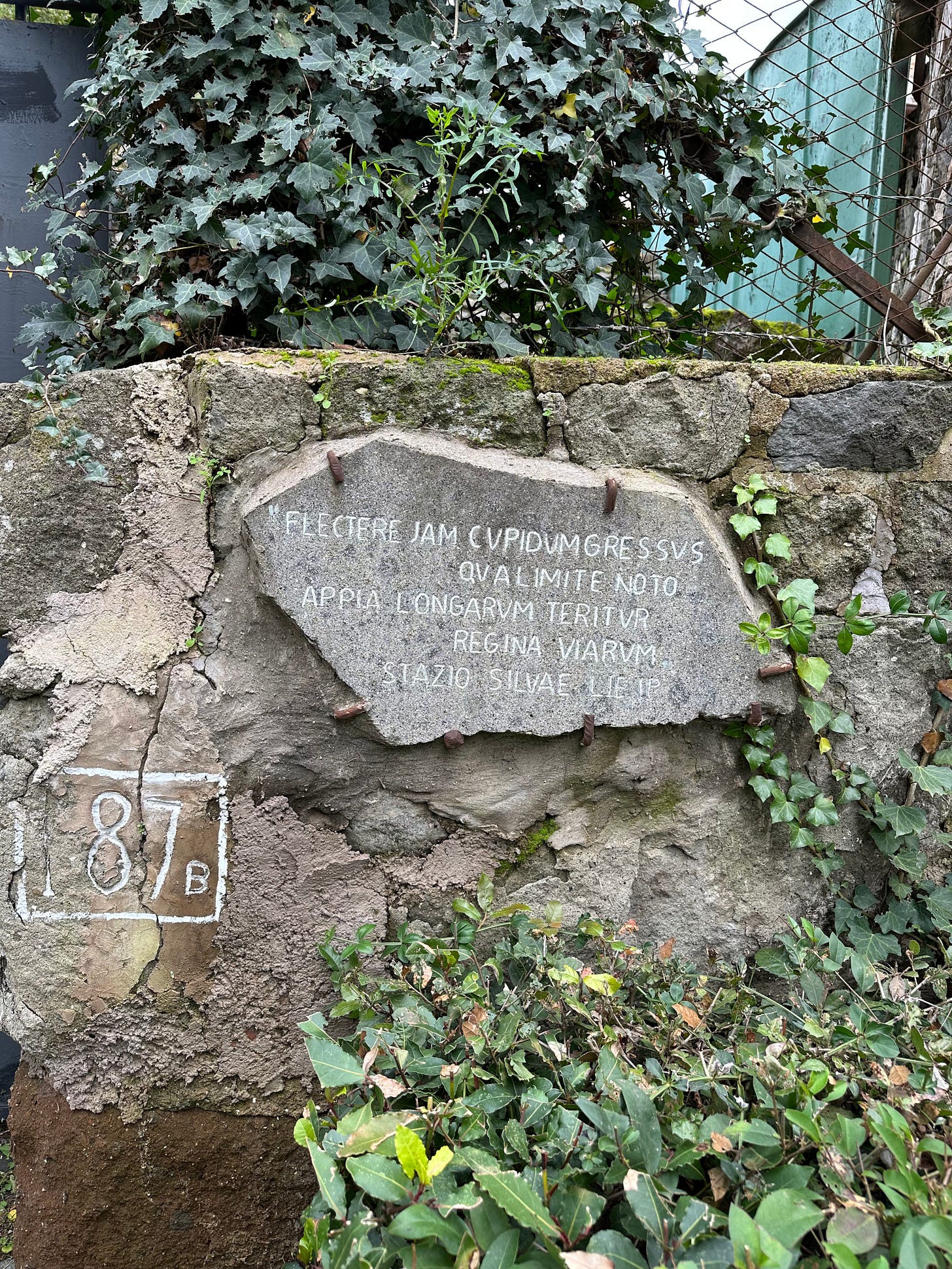
Back in March I wrote of the Parco della Caffarella which is part of the vast Parco Regionale dell’Appia Antica, Europe’s largest urban park. On the other side of the via Appia Pignatelli from the valley of the Caffarella is the path of the ancient Appian Way. It is calm, and green, and somehow entirely out of time. If feeling particularly whimsical (and, on occasion, I think that’s a good idea), one can hear the echoes of the massed steps of Roman soldiers as the wind stirs the pines.
The ancient “Regina Viarum” (Queen of Roads), a title coined by the poet Statius is still in part paved with slabs of local lava which bear ruts from the trundling wheels of centuries of carriages. These stones have seen it all: armies and emperors; the crucifixions of 6,000 slaves along the road following the rebellion led by Spartacus; the barefoot triumph of Abebe Bikila in the 1960 Olympic marathon.
It is a wildly evocative and bucolic jumble of ruined tombs amid cypresses and pines a stone’s throw from the very centre of town. Occasionally, in the kind of scene which belongs in a movie not on a random weekday morning in the twenty-first century, a shepherd moves his flock from one field to another. Last spring as I took folk on an iteration of my “Roads and Water” tour we saw a lamb being born by the side of the road.

During the interminable stages of lockdown, and while no one was travelling, I had quite a lot of time on my hands. There were red zones, orange zones, curfews, no inter-regional movement, no movement beyond the city limits, and umpteen exhausting variants of the above, all of which have now blurred into the recalling into one amorphous globule of elastic time. I wrote a blog, prepared my weekly online talks, and took myself on long walks when that was allowed, exploring in ever more detail places with which I had long felt familiar.
And so it was that one day I found myself just off the Appian Way on an unmetalled road by a small military base of some sort. Behind gates intriguing glimpses of gardens and enviable villas, and all of a sudden a sign for a farm shop, and an aniseedy whiff of a field of fennel.
I investigated further and found roses, immaculate fields of brassicas, rusting tractors, goats, hens, much chicken wire, an abandoned scooter, a defunct trampoline. It was a bucolically chaotic sight, and like the occasional gnarly-handed shepherds with their shiny tracksuit bottoms, saved from preciousness by slashes of ugliness. A sort of Cold Comfort Farm des nos jours.
The Orto Antico da Giorgio is run by a pleasantly brisk Indian couple (I’ve no idea who Giorgio is, or if he indeed exists) and the shop is a sort of hangar jammed with the vehemently seasonal and always appealing produce of the surrounding fields. By the till hangs a large framed photograph of the Golden Temple of Amritsar and in mid-January there are still some festive fairy lights (who can blame them, I’ve kept my lights up too).
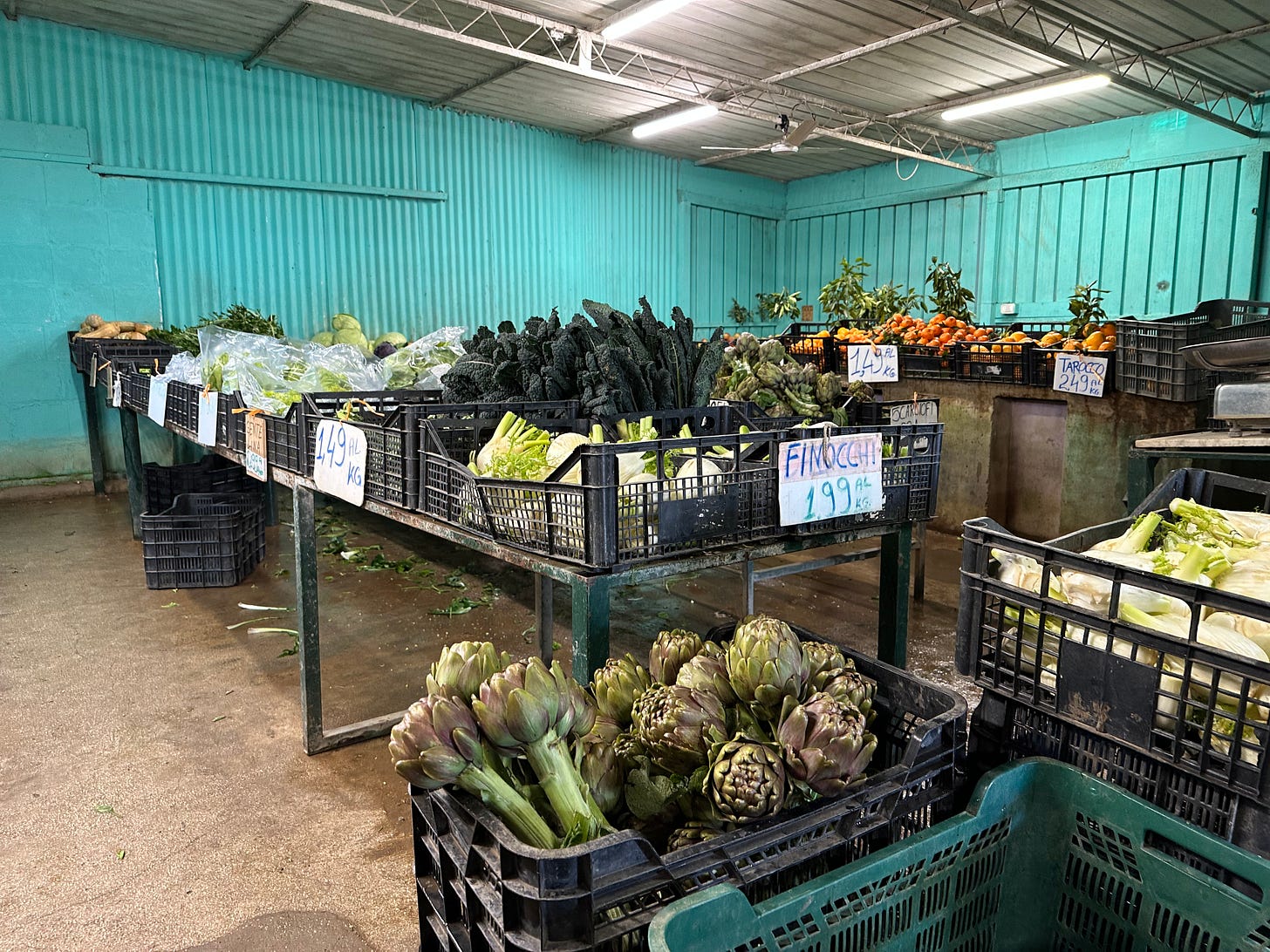
Today the death of Gina Lollobrigida was announced, she was ninety-five. Among the panoply of accolades justly showered on her perhaps the most surprising is that in the sixties a new varietal of curly lettuce was named after her curly hair, lollo rossa, the lettuce of choice in 1990s London. I’ve always thought it a sign of her good taste that she lived in a villa on the Appia Antica, and I like to imagine that she’d occasionally drop by the orto da Giorgio to pick up some carciofi and cabbages, and perhaps a head of artfully tousled red lettuce, waiting her turn at the till with a plastic crate of muddy veg just off the Queen of Roads.
Orto Antico da Giorgio
via dei Lugari 159
Roma 00178
Mon-Sat 8am-8pm (closed Wed at present); Sun 8am-1pm
Credit cards accepted


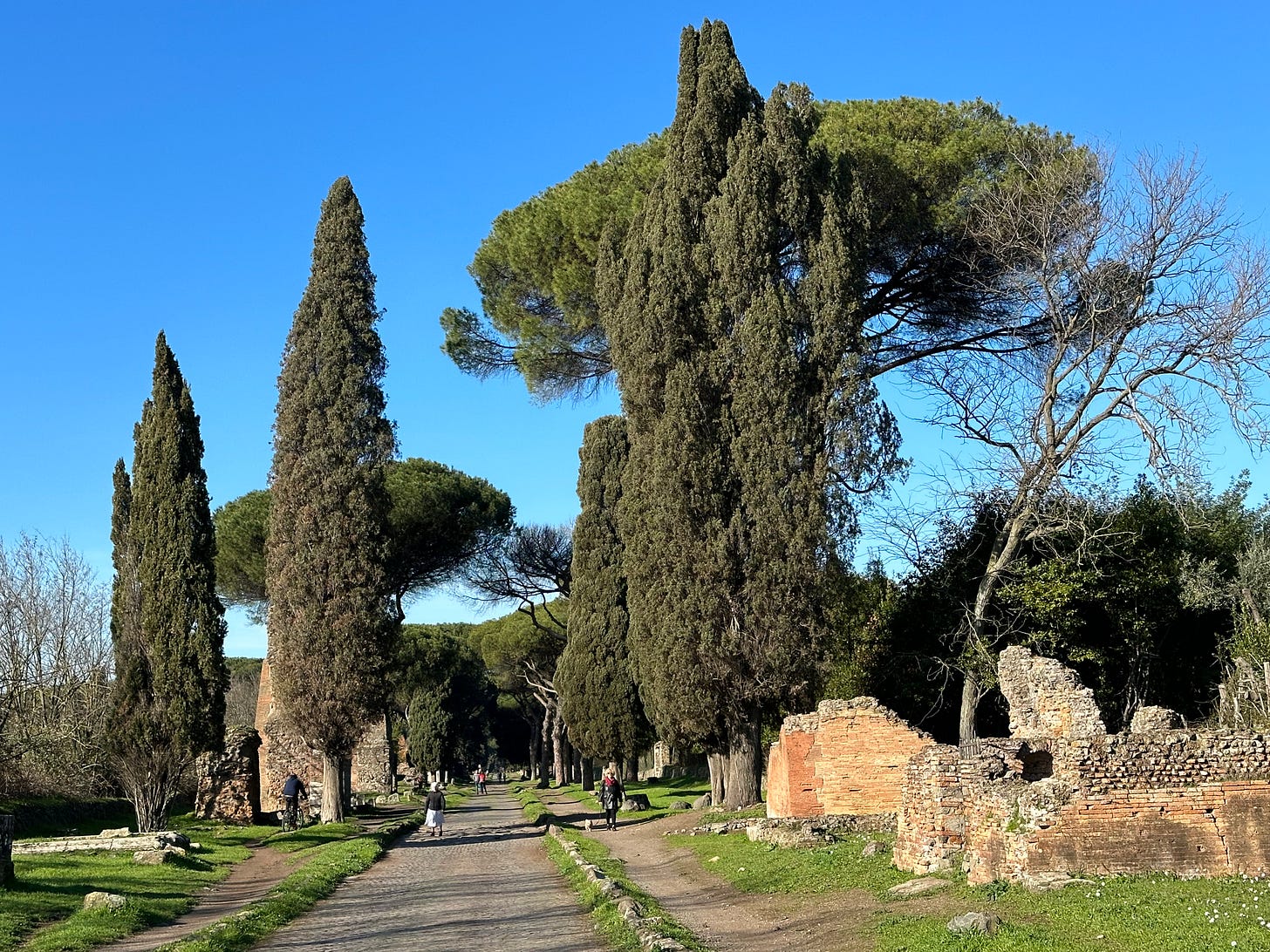
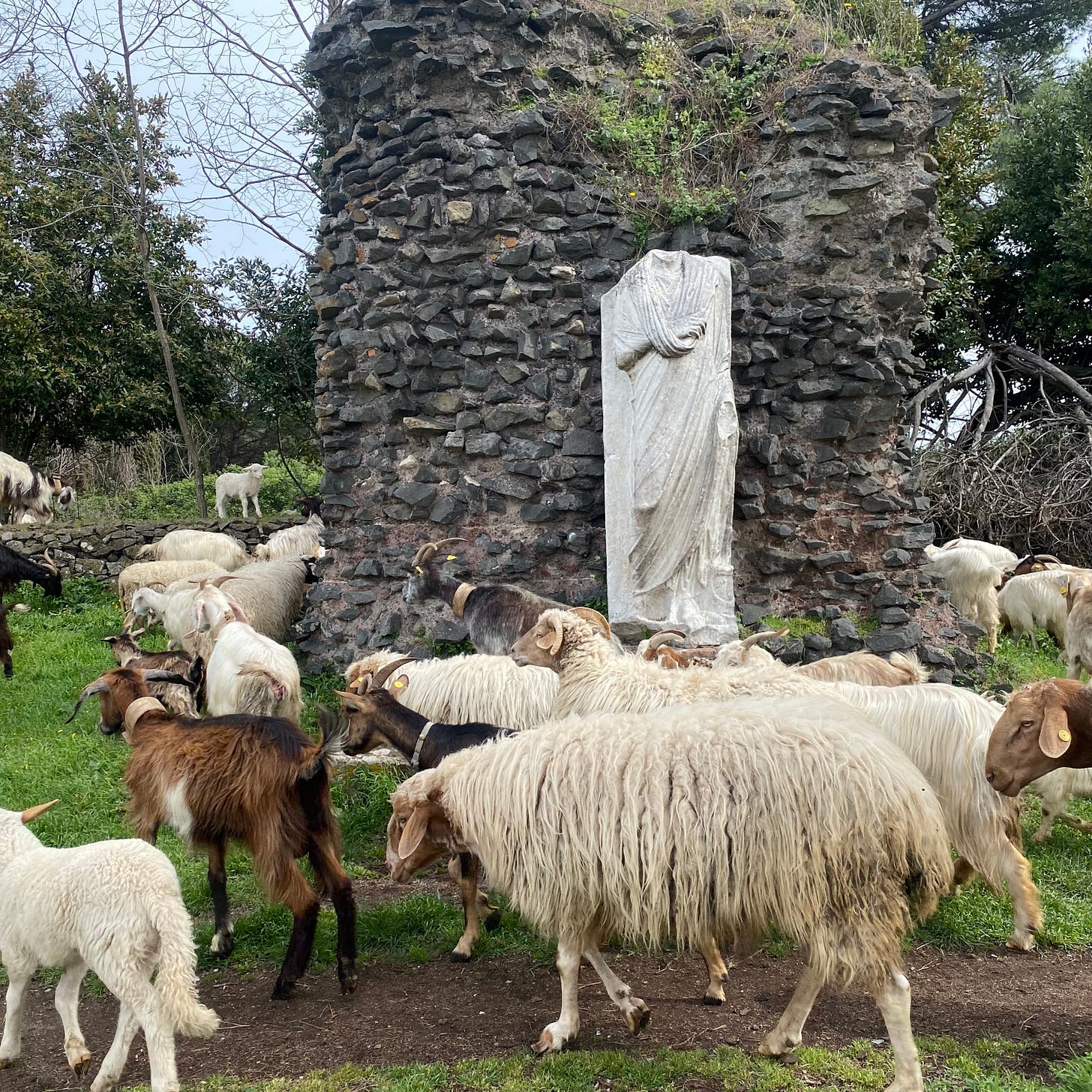
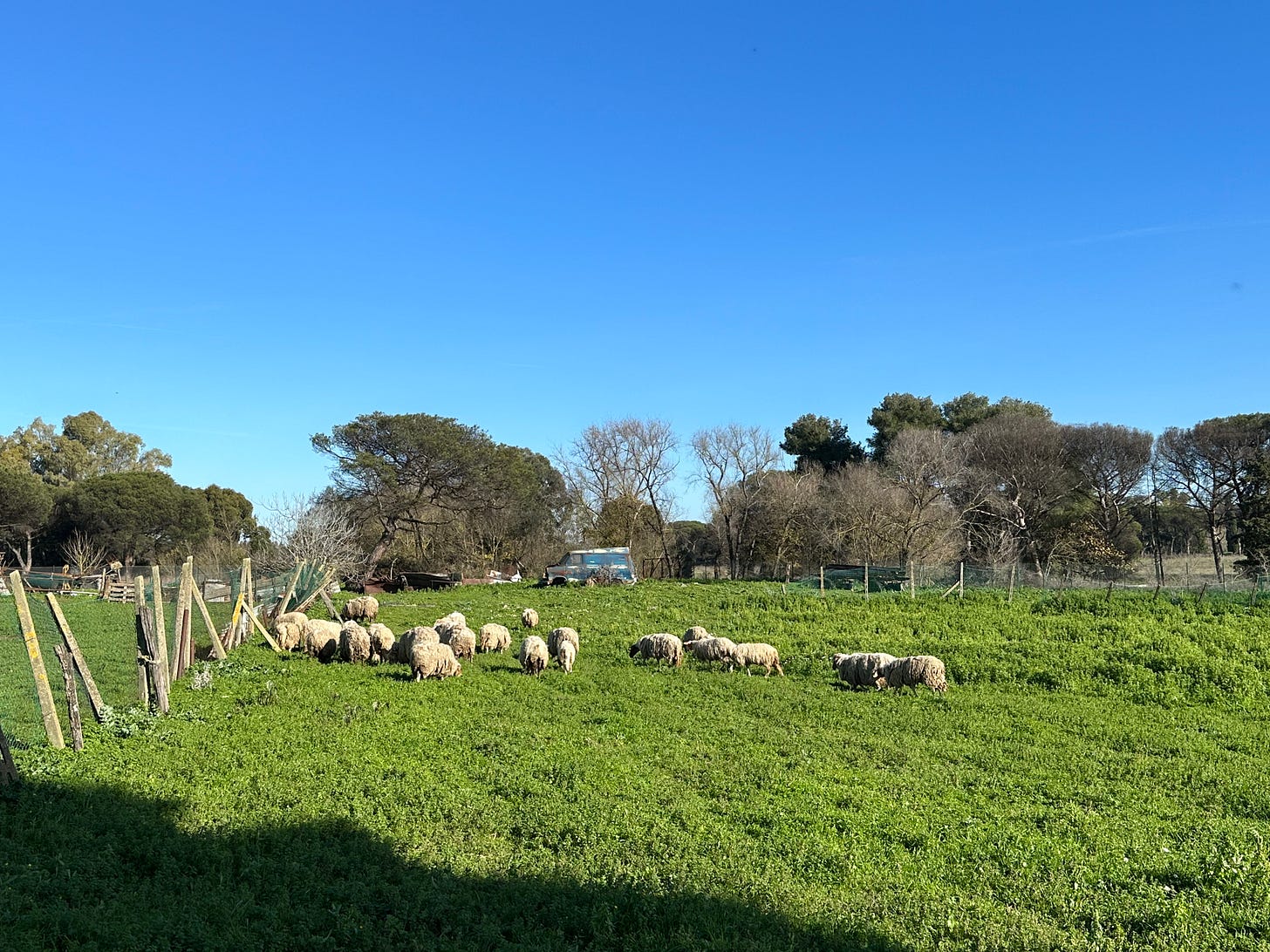
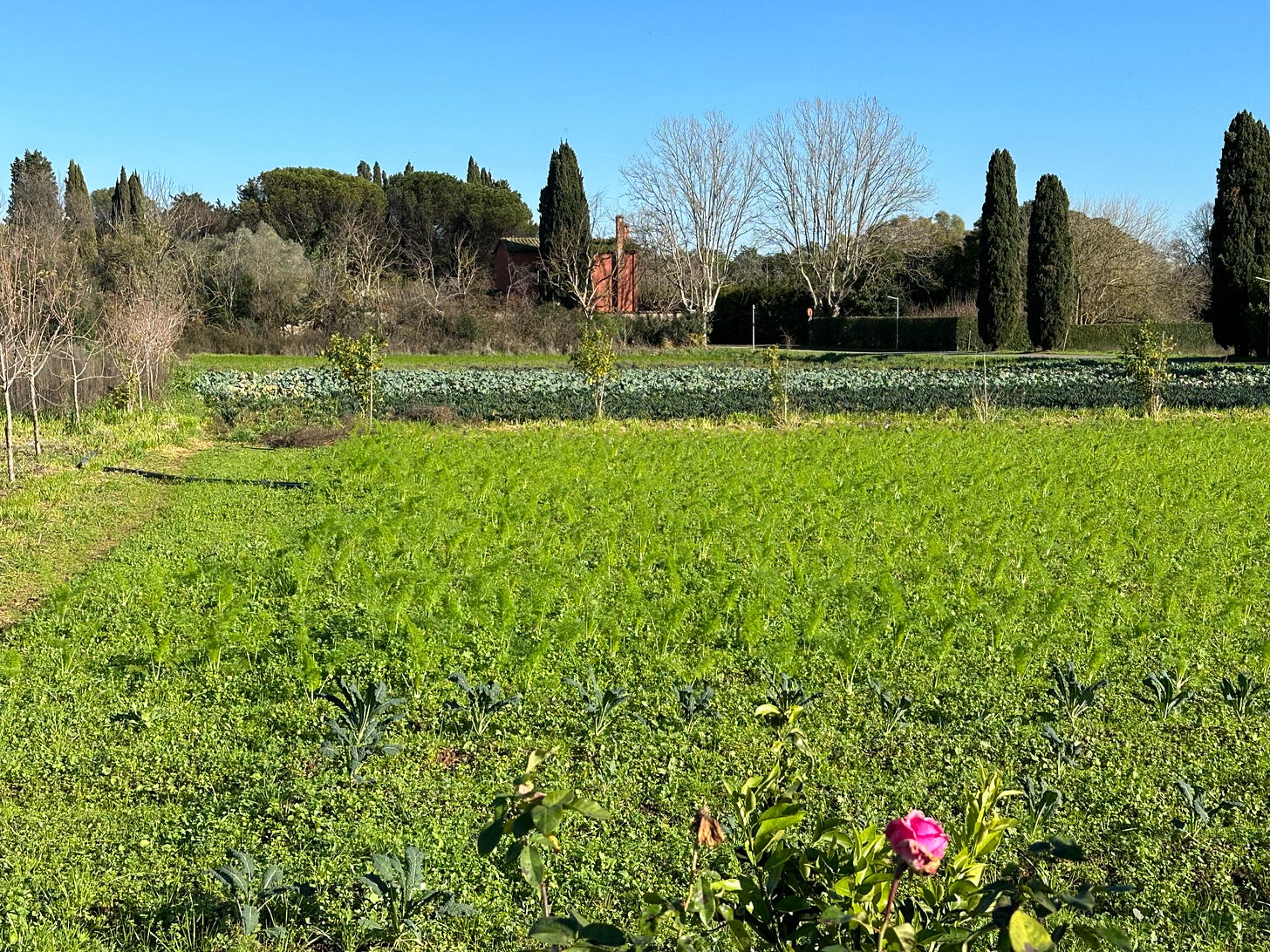

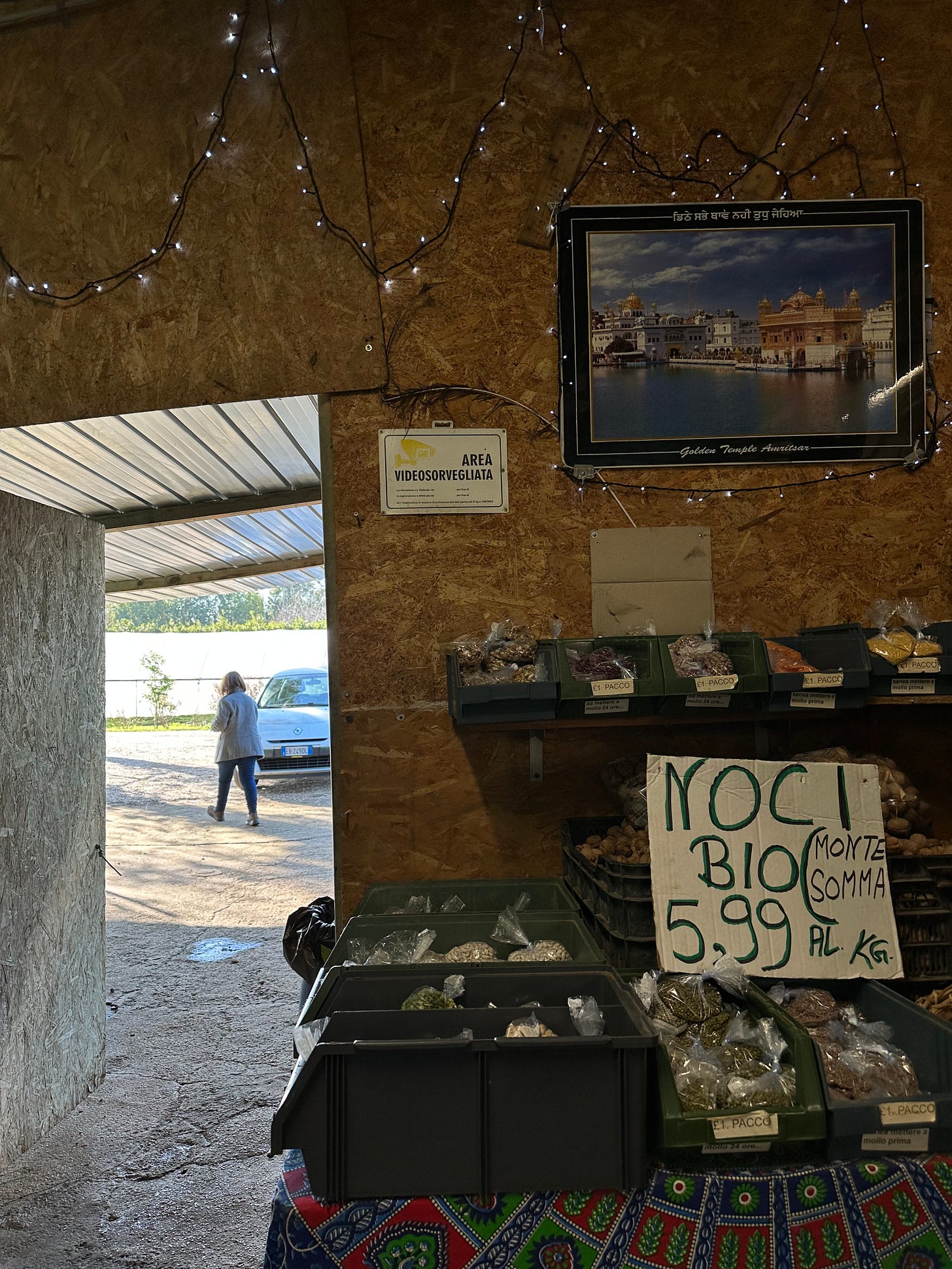
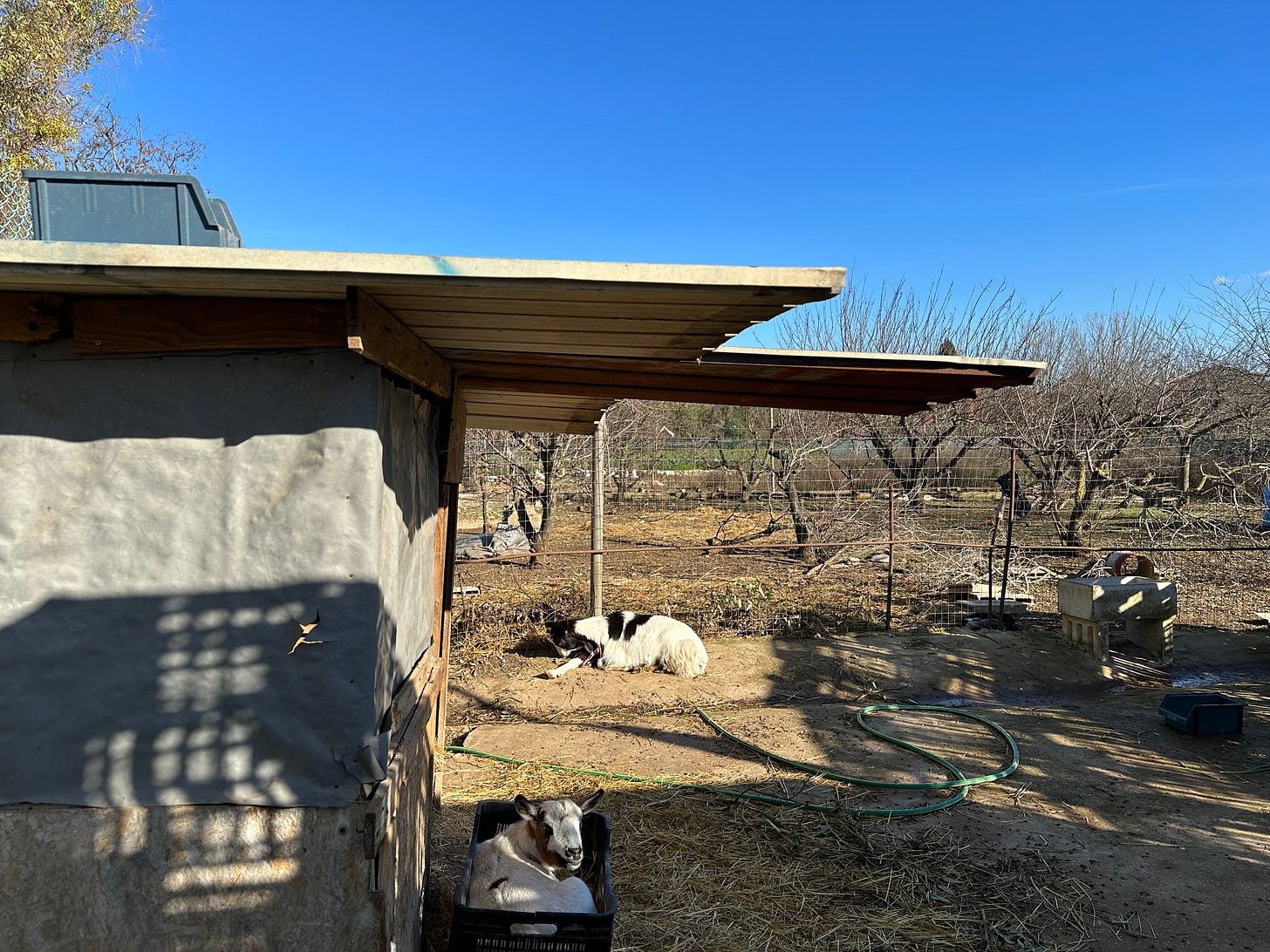
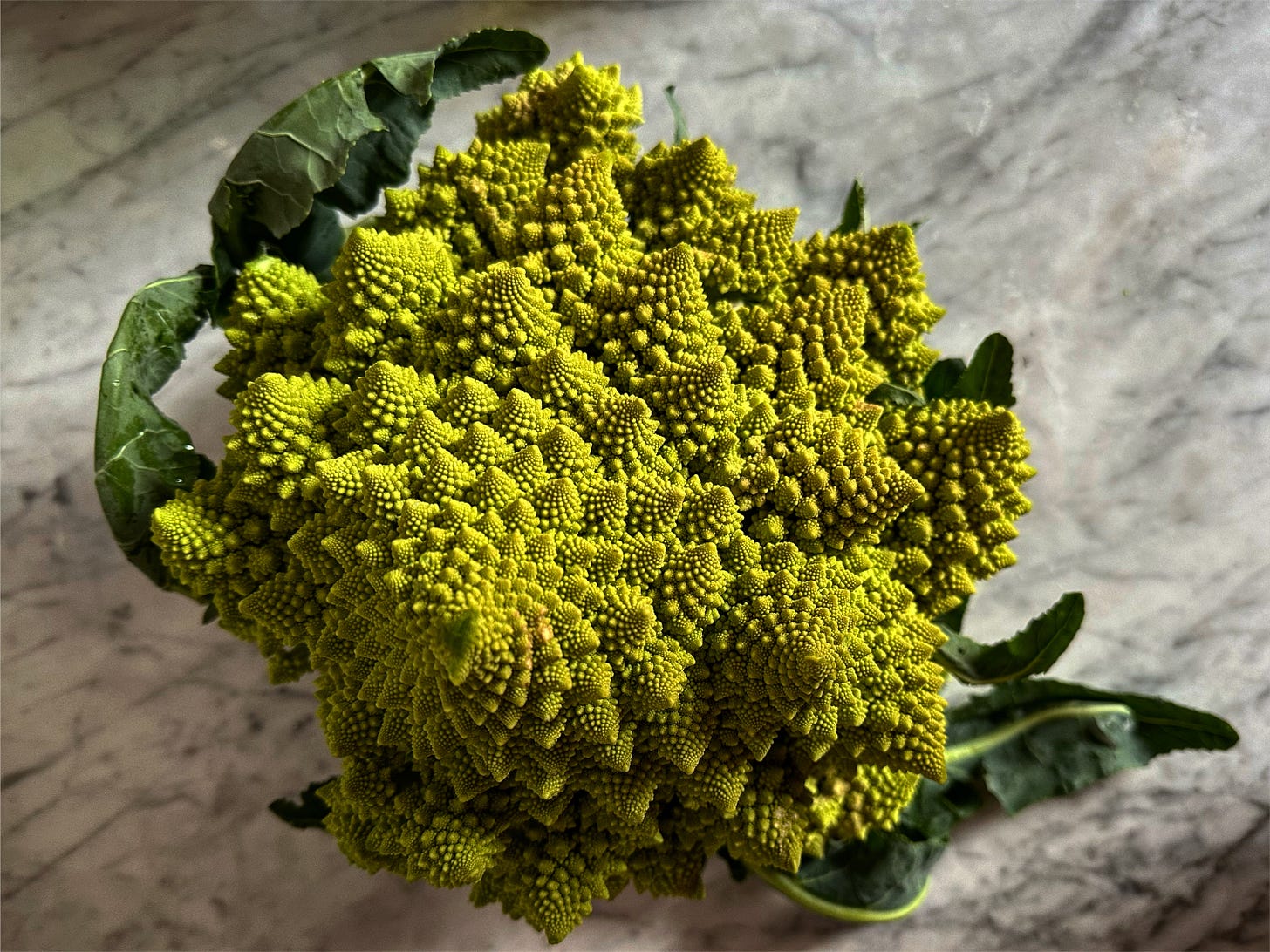
This is amazing! Rome is a ceaseless wonder
Thank you Agnes for brightening my morning with your brilliant story. Haven't had opportunity to read the last few episodes on Substance , now I I'm remembered once again of your wonderful writing